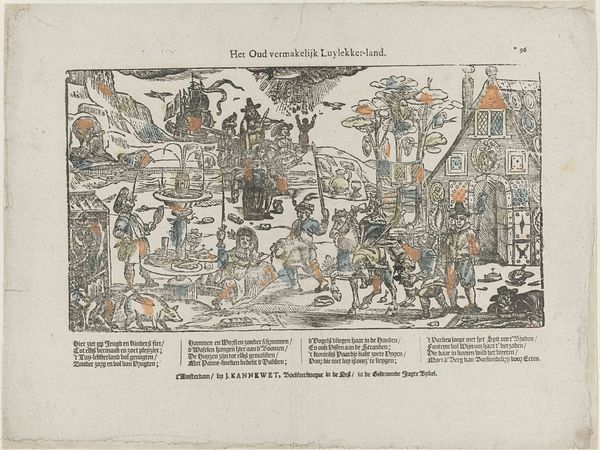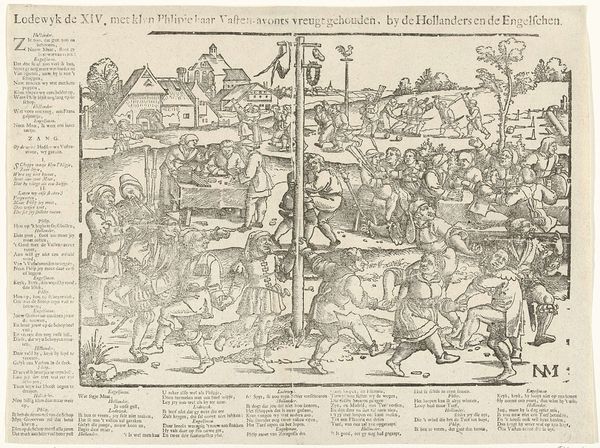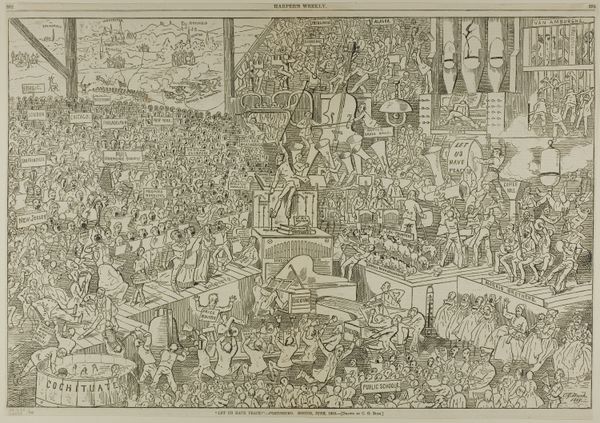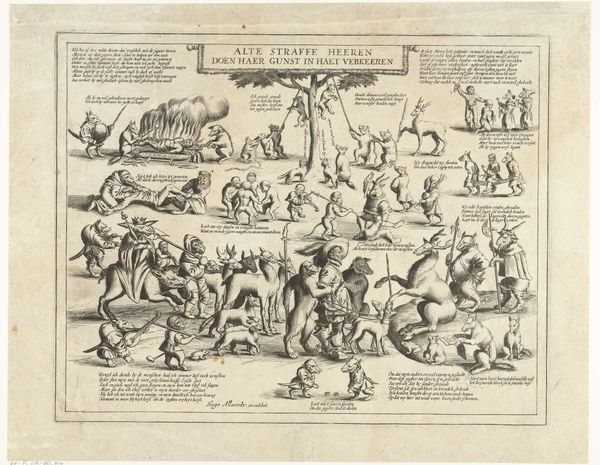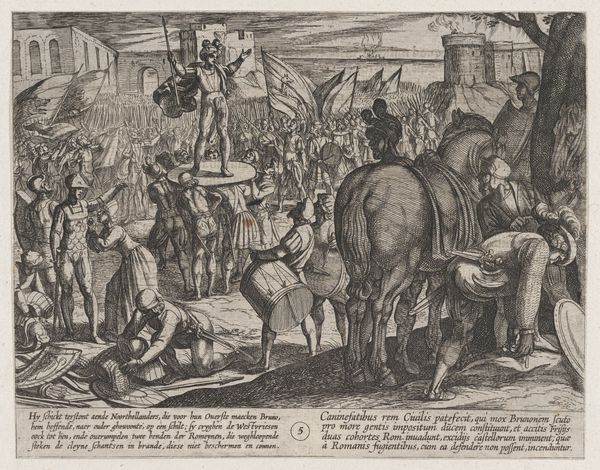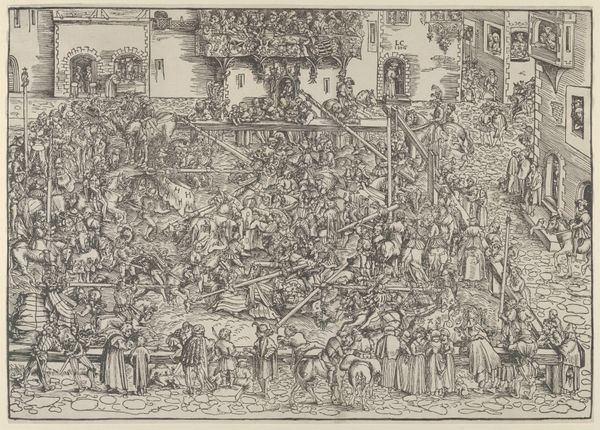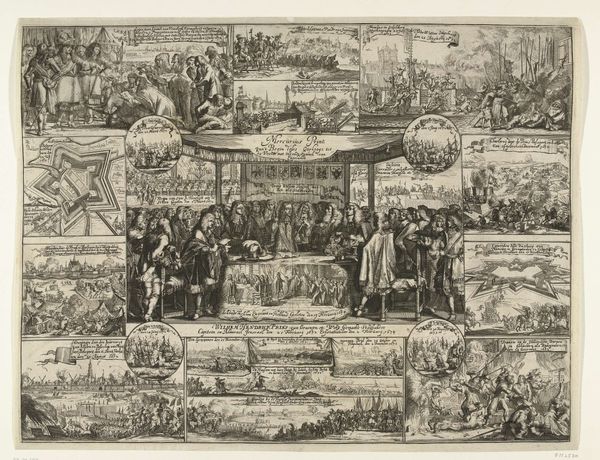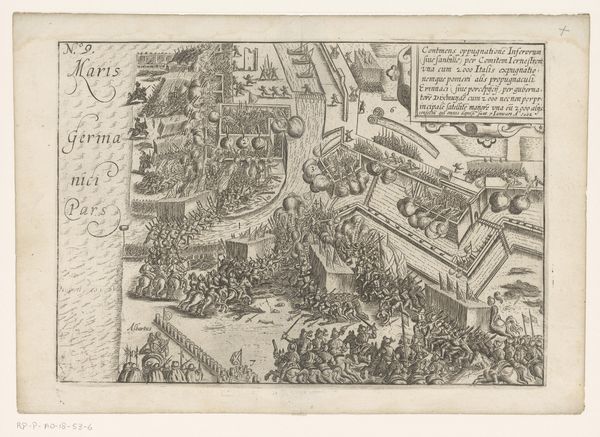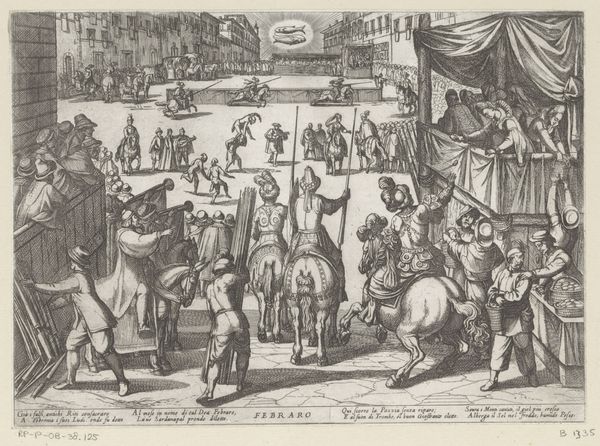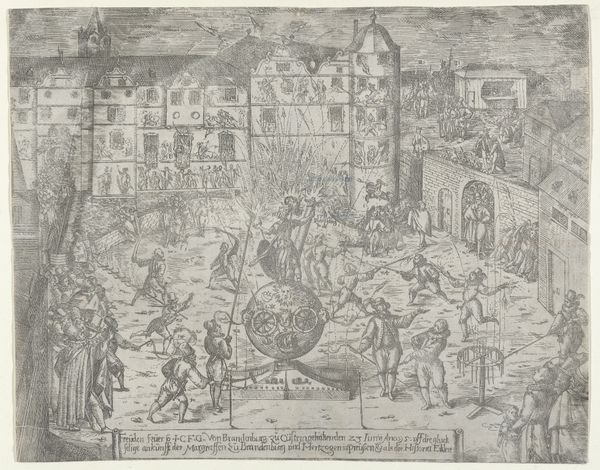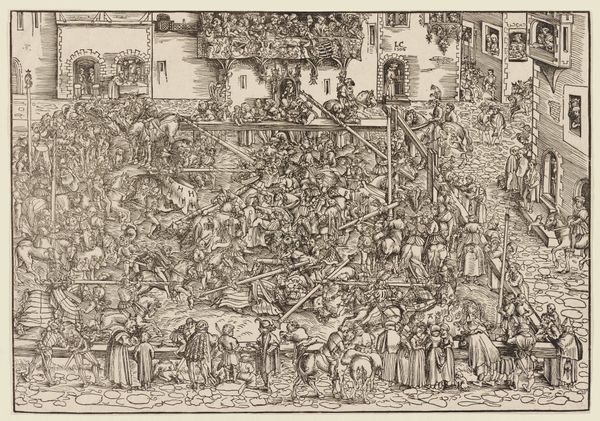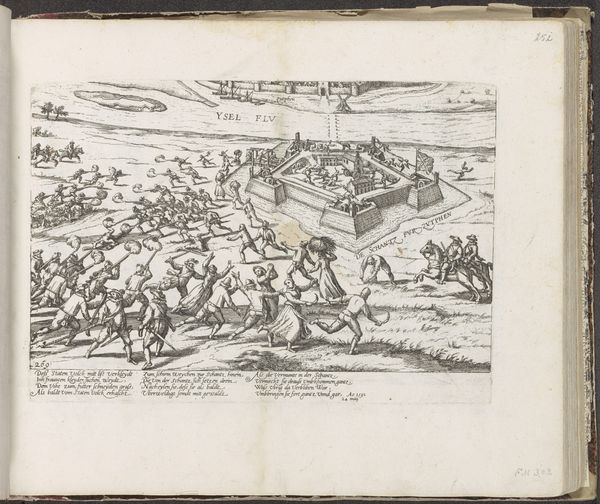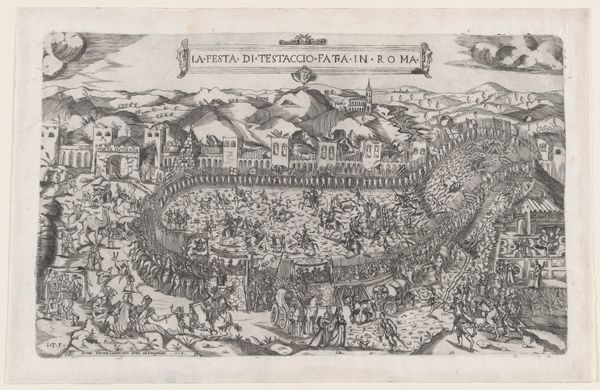
print, engraving
#
medieval
# print
#
landscape
#
genre-painting
#
northern-renaissance
#
engraving
Dimensions: height 345 mm, width 429 mm
Copyright: Rijks Museum: Open Domain
Curator: Welcome! Here we're looking at "De vermaakelyke vasten-avond vreugd," or "The Amusing Shrovetide Festivities," an engraving created sometime between 1761 and 1804, now held in the Rijksmuseum collection. Editor: It strikes me immediately as a scene bursting with energy, if somewhat chaotically rendered. The figures are a flurry of limbs, centered by that… is that a maypole? The texture is really compelling for such an old engraving. Curator: It is indeed a maypole. What we’re seeing here is a snapshot of Shrovetide celebrations, the revelry preceding Lent, offering a fascinating glimpse into the social customs of the time. Note the diverse activities depicted—dancing around the maypole, feasting, even mock battles—reflecting the varied forms of pre-Lenten amusement. Editor: The composition certainly emphasizes the ‘genre-painting’ aspect. Notice how the engraver uses line work to create a sense of depth. Also, consider the balance – or perhaps deliberate imbalance. The lower register with dancers almost spilling out feels distinct from the static upper portion where people sit. Curator: The artist is portraying communal identity. Shrovetide festivities, such as portrayed here, played a crucial role in community building and solidifying social bonds, and acted as temporary release of social constraints prior to the austerity of Lent. It granted agency to different social actors at a specific time of year. Editor: A ‘release’ indeed! Looking closely, there’s a rough, almost bawdy quality to some of the figures that contributes a certain…earthiness to the overall tone. Does this rawness tell us anything? Curator: Certainly! The earthiness aligns with broader cultural expressions, acknowledging more visceral elements in common public rituals, reminding us that historical prints don't only picture events but actively shape collective memory and communal values. Editor: That brings the piece to life for me. It’s more than just a record of what once was; it's an argument about what was, how it felt, and perhaps, what it should mean. Thank you! Curator: Indeed! I am also grateful we shared this exploration into social rituals. I'll be curious to know what other listeners may bring forth to contextualize.
Comments
No comments
Be the first to comment and join the conversation on the ultimate creative platform.

